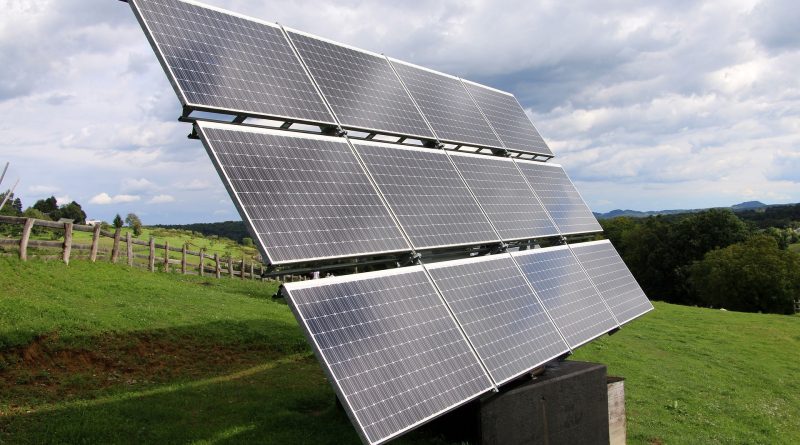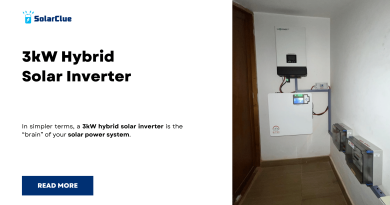The Rising Cost of Solar Power: Factors Unveiled
Table of Contents
The Rising Cost of Solar Power: Exploring the Factors Behind the Price Surge
Solar power has emerged as a promising and environmentally friendly alternative to traditional energy sources. Over recent years, its popularity has soared significantly, driven by its potential to reduce carbon emissions and provide sustainable electricity generation. However, with this exponential growth in solar power adoption, the cost of installing solar panels has also witnessed a substantial increase. This blog aims to shed light on the reasons behind the rising cost of solar power, exploring various factors that contribute to this price surge.
1. Increasing Demand and Limited Supply
As more individuals, businesses, and governments recognize the importance of renewable energy sources, the demand for solar power has surged. This escalating interest has led to a limited supply of key solar materials, such as polysilicon, which is essential for solar panel production. The demand-supply imbalance has driven up the cost of these materials, subsequently increasing the overall cost of solar power systems.
2. Import Tariffs and Trade Wars
The solar industry, like many others, has not been immune to the global wave of protectionism and trade wars. In recent years, several countries, including the United States and China, have imposed import tariffs on solar equipment. These levies have significantly impacted the price of solar panels and related components, adding to the overall cost of solar power systems. The resulting uncertainty and instability in the solar market have further contributed to price fluctuations.
3. Research and Development Costs
The continually evolving solar technology requires substantial investments in research and development (R&D). Solar panel manufacturers dedicate significant resources to improving efficiency, durability, and overall performance. These R&D costs, combined with the need for continuous innovation, inevitably find their way into the final price of solar power systems. Although advancements in technology promise long-term benefits, the immediate impact is an increased upfront cost for consumers.
4. Installation and Permitting Expenses
Installing solar panels requires skilled labor, specialized equipment, and compliance with building codes and regulations. Often, obtaining necessary permits and meeting specific installation requirements can be time-consuming and expensive. The overall cost of solar power systems includes expenses related to site inspections, system design, labor, and administrative procedures. These additional costs, though necessary to ensure safe and effective installations, contribute to the rising price of solar power.
5. Financing and Subsidy Reductions
Previously, generous government subsidies and incentives helped make solar power more affordable for consumers. However, as solar power gained popularity and became a more mainstream source of energy, governments around the world have reduced or phased out these financial incentives. The shrinking availability of subsidies has shifted the financial burden onto consumers, making solar power systems costlier upfront. While the long-term savings from reduced utility bills still make solar power an attractive investment, the initial expenditure acts as a barrier for many.
6. Market Consolidation and Business Models
The solar industry has experienced significant consolidation in recent years, with larger companies acquiring smaller ones and dominating the market. While this consolidation can lead to economies of scale and efficiency improvements, it can also result in reduced competition. A less competitive market can keep solar prices artificially high and limit consumer choices. Additionally, certain business models, such as leasing or power purchase agreements, may offer lower upfront costs but involve long-term contracts with higher overall expenses.
Conclusion
Navigate the rising costs of solar power with SolarClue® as we unveil the factors influencing expenses. From supply chain dynamics to government policies and project scale, we offer insights to optimize costs. Stay informed about regulatory changes, currency fluctuations, and financing innovations with SolarClue®’s guidance. Explore a clear path to ROI, considering energy savings and incentives. Understand the lifecycle impact and adopt maintenance practices for a sustainable solution. SolarClue® demystifies the cost implications of energy storage integration, ensuring consumers make informed choices. Trust our commitment to transparency and affordability, guiding you through a reliable and cost-effective solar power transition. Contact us for your solar journey.
Frequently Asked Questions
The rising cost is influenced by raw materials, manufacturing, and installation expenses. While technological advancements improve efficiency, they can initially contribute to higher costs as new technologies are integrated.
SolarClue® provides insights into global supply chain dynamics, helping consumers understand how factors like raw material availability and geopolitical events impact solar power component prices.
Government policies and tariffs significantly impact solar power costs. SolarClue® keeps consumers informed about regulatory changes, helping them navigate the evolving landscape and make informed decisions.
SolarClue® assists consumers in understanding how project scale impacts costs, offering guidance on optimizing expenses based on individual project sizes and goals.
Currency exchange rate fluctuations can affect costs. SolarClue® provides risk mitigation strategies, helping consumers navigate currency-related challenges and ensuring cost-effective solar solutions.
SolarClue® highlights innovations in financing and incentives, empowering consumers to explore affordable options. Resources include guidance on financing models and information about available incentives.
SolarClue® guides consumers in calculating and maximizing ROI, considering factors like energy savings, government incentives, and the long-term benefits of adopting solar power.
SolarClue® explains how the lifecycle of solar power systems impacts costs and recommends maintenance practices to ensure longevity, efficiency, and a cost-effective energy solution.
SolarClue® provides insights into the cost implications of energy storage integration, explaining the benefits and assisting consumers in evaluating whether storage solutions align with their goals.
SolarClue® prioritizes transparency and affordability in its solutions, fostering trust among consumers. The company’s commitment to providing reliable and cost-effective energy solutions ensures satisfaction throughout the solar power transition.




